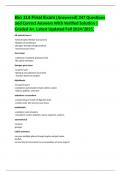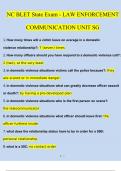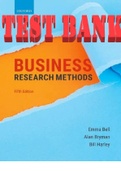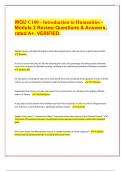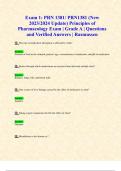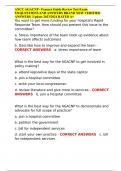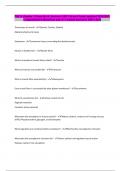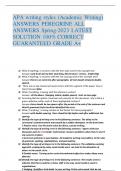Exam (elaborations)
Bio 114 Final Exam (Answered) 247 Questions and Correct Answers With Verified Solution | Graded A+. Latest Updated Fall 2024/2025.
- Course
- Institution
Bio 114 Final Exam (Answered) 247 Questions and Correct Answers With Verified Solution | Graded A+. Latest Updated Fall 2024/2025.
[Show more]
